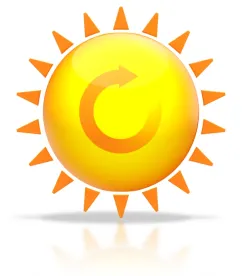The Occupational Health and Safety Administration’s new campaign “Water. Rest. Shade.” alerts employers and workers to the hazards of working in high summer temperatures and highlights OSHA’s educational and training resources, including a free app, to help lower the risk of heat-related illnesses in the workplace.
According to OSHA, in 2014, 2,630 workers suffered heat illness and 18 workers died that year from heat stroke and related causes.
Under the General Duty Clause, Section 5(a)(1) of the Occupational Safety and Health Act of 1970, employers must protect workers from “recognizable hazards” in the workplace, including “heat-related hazards,” OSHA said, or employers risk penalties and sanctions.
OSHA has pointed out that industries with outdoor work are particularly vulnerable to heat injuries and deaths. These industries include construction, trade, transportation and utilities, agriculture, building, grounds maintenance, waste and recycling, and support activities for oil and gas operations. Industries with indoor work, such as steel, also face heat-related risks.
OSHA’s heat-related safety resources include:
-
Free 30-minute and one-hour education and outreach presentations at construction sites and other workplaces.
-
33-page “Toolbox/Tailgate Talk” training guide for employers.
-
Free Android and iPhone phone app called the “OSHA Heat Safety Tool,” available in English and Spanish, designed to let workers and supervisors calculate the heat index at their worksite, and, based on the heat index, displays the risk level. The app also shows the protective measures that should be taken at that risk level, including precautions and first aid tips for heat stroke, heat exhaustion, heat cramps, and heat rash. The app has been downloaded an estimated 250,000 times since its release.
-
Educational safety posters, videos, and illustrated fact sheets, available in English and Spanish, on the signs of heat-related medical emergencies.
Earlier this summer, Dr. David Michaels, Assistant Secretary of Labor for Occupational Safety and Health, pointed out some of the protections employers offer their employees working in the heat. These include:
-
Cooling vests, bottled water, water jugs and coolers, shade canopies, sunscreen, and hydrating popsicles;
-
Light-weight safety vests and shirts, vented hardhats, and chilling towels and bandanas; and
-
“Crucially” more frequent breaks on particularly hot days, water misters in some work areas, such as mills, and bowls of fruit in break areas and cafeterias.
One employer, Michaels said, provided crane operators with small weather stations that measure the heat index.
Finally, OSHA has sent “Letters of Interpretation” to guide employers on heat-related hazards.




 />i
/>i
